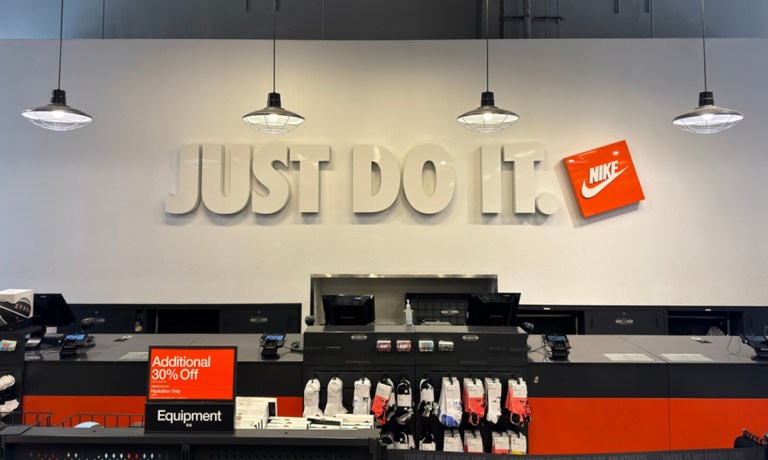
The consequences of its flawed direct-to-consumer (D2C) strategy continue to haunt Nike. As reported Tuesday (Oct. 1), the company’s revenue showed weakness across all channels as it tried to curry favor with its wholesale partners and recapture some of the magic that brought it double-digit growth a decade ago.
“We are moving aggressively to shift our product portfolio, create better balance in our business and reenergize brand momentum through sport,” Nike CFO Matt Friend told the company’s earnings call audience. “That said, a comeback at this scale takes time, and while there are some early wins, we have yet to turn the corner.”
That turned out to be an understatement. Nike reported fiscal 2025 Q1 revenues of $11.6 billion, down 10% year over year, driven by declines across its segments. Nike Direct revenues fell 13% to $4.7 billion, with a 20% drop in Nike Brand Digital sales, though a 1% increase in Nike-owned stores partially offset the decline. Gross margin improved by 120 basis points to 45.4% due to lower product and logistics costs.
Despite these challenges, Friend painted an optimistic picture of Nike’s future, a future that includes the wholesale partners it once put on the back burner, including planned exclusive products with Foot Locker, Dick’s Sporting Goods and unnamed running specialty store chains.
A big reason for the optimism was absent from the call: New CEO Elliott Hill replaced John Donahoe last week. Hill is a veteran Nike loyalist and is expected to return the brand to its athletic-oriented roots rather than the digitally focused lifestyle brand it became under Donahoe. According to Friend, the company will be looking for balance in its distribution but will not abandon the Nike Direct and Nike Digital strategy.
“We continue to see opportunities to more profitably run our direct business,” Friend said in answer to an analyst’s question about the strategy.
“We talked about the investments that we’re making against expectations for further growth and were largely meeting the demand that the consumer was driving towards those channels. We continue to see opportunities and that includes a higher mix of full-price product in our direct channels, but also leveraging supply chain capabilities against the capacity that we’ve, in effect, built to serve our D2C business. As we’ve talked about for the last couple quarters, our focus is on driving growth across the entire marketplace.”
Nike postponed any guidance for the balance of its fiscal year, and expected similar revenue drops for the upcoming quarter as it has to revert to promotional pricing on many of its most iconic brands, including Air Force and Air Jordan. Friend expects a heavier emphasis on running and soccer, both of which have better international distribution than its basketball and lifestyle brands.
“Part of the pressure on margins and the additional color that we provided on the balance of the year is that by driving the dimensionality more particularly in the Nike direct channels and particularly the digital channels, it does create a transitory headwind on margin as we right size,” Friend said, “But looking forward these [iconic] products will continue to remain an important part of the portfolio. We just are focused on trying to accelerate newness and innovation to create more momentum with consumers and more energy with consumers.”
And how will Nike’s new wholesale partners react?
“Our partners are leaning in order to be able to reignite growth and momentum for Nike on the wholesale side,” Friend said. “And I wouldn’t drive past the fact that what’s most important in wholesale is we’ve got to have a breadth of distribution segmented to create and demonstrate the full dimension of the Nike portfolio across men’s, women’s and kids’ brands.”